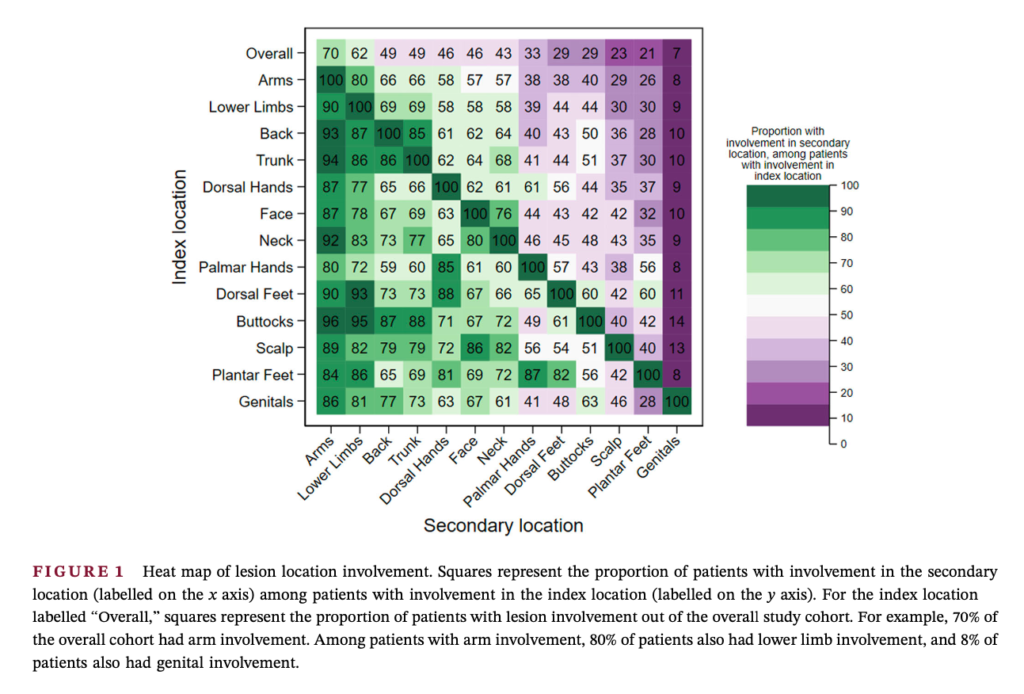The more atopic dermatitis (AD) lesions a patient has, the more severe their disease and the more likely they are to have poor disease control and a decreased quality of life, a new study shows.
This cross‐sectional study included 1,211 adults with dermatologist‐ or dermatology practitioner‐diagnosed AD in the CorEvitas AD Registry (2020–2021) who initiated systemic therapy within 12 months before or at enrollment or had moderate‐to‐severe AD at enrollment.
Researchers assessed 13 areas of lesion involvement using a body map, and numbers of lesion locations were categorized as 0, 1, 2–3, 4–6, and ≥7.
Patients most frequently reported lesions on the arms and lower limbs. Most patients were receiving systemic therapy or topical therapy, regardless of lesion location. Fully three of five patients had ≥4 locations with lesions. Among patients who had ≥7 lesion locations, 94% reported moderate-to-severe AD, and 80% said that their AD was not in control. Patients with fewer lesion locations also reported substantial disease burden, the study showed.
Nearly half of the patients who had one lesion location reported uncontrolled AD. Patients also experienced more loss of work productivity and poor quality of life with an increase in number of lesion locations.
“An increase in the number of lesion locations corresponded with severe disease burden and poor disease control,” conclude researchers who were led by Eric Simpson, MD, Director of Clinical Studies Unit in Dermatology and the Frances J. Storrs Medical Dermatology Professor at Oregon Health & Science University in Portland. “Patients experienced substantial disease burden regardless of number of lesion locations involved.”
The study appears in JEADV Clinical Practice.


